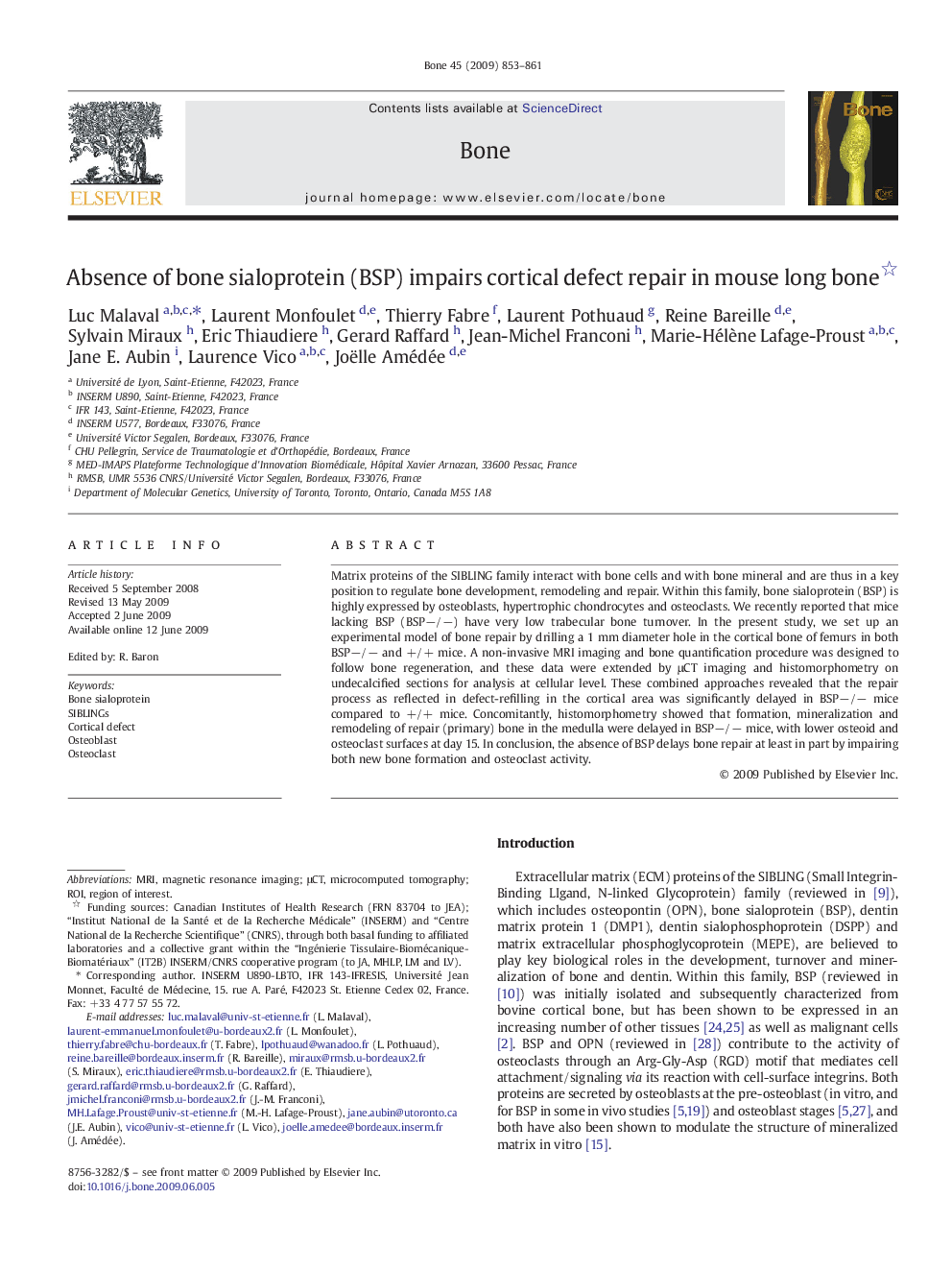| Article ID | Journal | Published Year | Pages | File Type |
|---|---|---|---|---|
| 2781694 | Bone | 2009 | 9 Pages |
Matrix proteins of the SIBLING family interact with bone cells and with bone mineral and are thus in a key position to regulate bone development, remodeling and repair. Within this family, bone sialoprotein (BSP) is highly expressed by osteoblasts, hypertrophic chondrocytes and osteoclasts. We recently reported that mice lacking BSP (BSP−/−) have very low trabecular bone turnover. In the present study, we set up an experimental model of bone repair by drilling a 1 mm diameter hole in the cortical bone of femurs in both BSP−/− and +/+ mice. A non-invasive MRI imaging and bone quantification procedure was designed to follow bone regeneration, and these data were extended by μCT imaging and histomorphometry on undecalcified sections for analysis at cellular level. These combined approaches revealed that the repair process as reflected in defect-refilling in the cortical area was significantly delayed in BSP−/− mice compared to +/+ mice. Concomitantly, histomorphometry showed that formation, mineralization and remodeling of repair (primary) bone in the medulla were delayed in BSP−/− mice, with lower osteoid and osteoclast surfaces at day 15. In conclusion, the absence of BSP delays bone repair at least in part by impairing both new bone formation and osteoclast activity.
